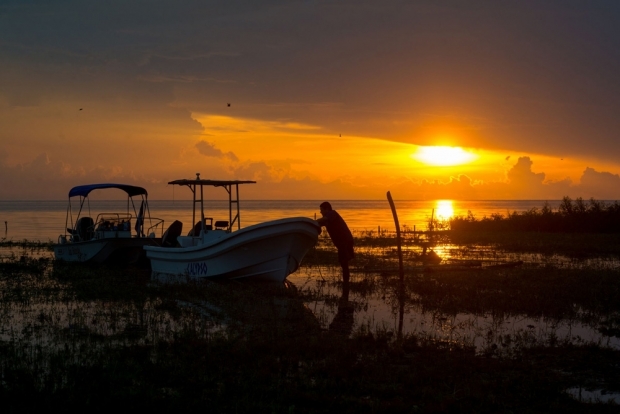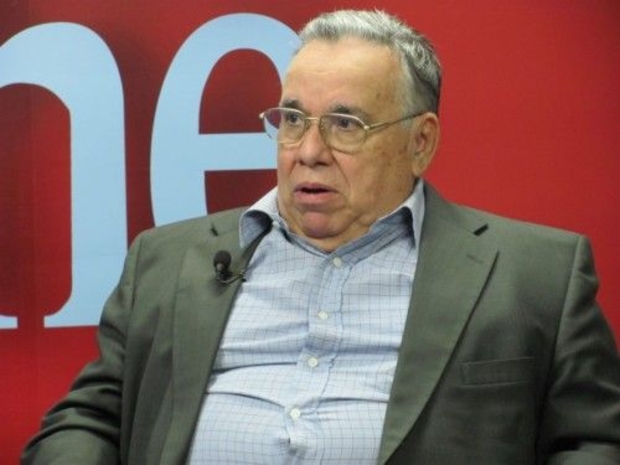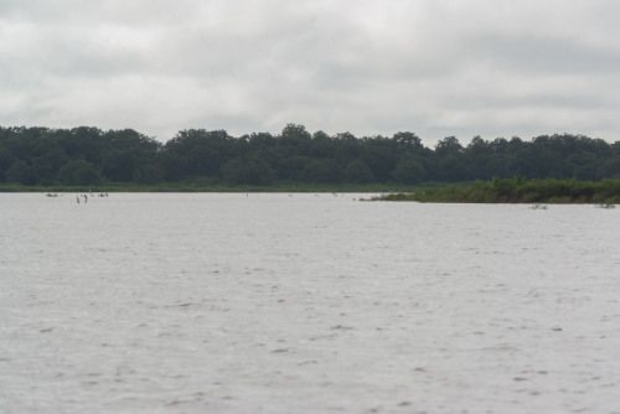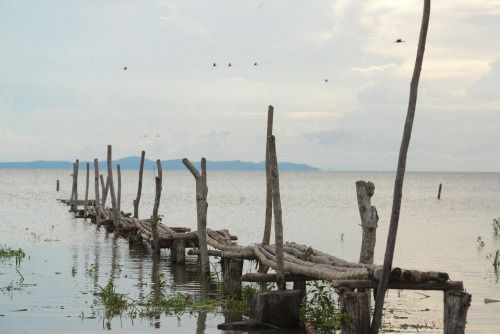Eighty years old, with more than a dozen books on national geography and natural resources to his name, he is the most authoritative voice in the country on environmental issues. Jaime Incer Barquero, former Minister of the Environment and Natural Resources Ministry (MARENA), urged Ortega’s administration and Hong Kong Nicaragua Canal Development Investment Co., Limited (HKND) to adjust the “Great Canal” project, the mega construction turned over to the Chinese businessman Wang Jing, which, according to Incer Barquero, could have a devastating effect on Nicaragua’s Great Lake. Incer Barquero advocates that the lake be protected and that it be used as a “provider of drinking water” for a country that is thirstier every day.
In an interview with the television show Esta Semana, he analyzed in depth the consequences and the environmental impact of the immense work of dredging that would be needed to meet all the goals laid out by HKND, which aims to build a canal 30 meters (98 feet) deep within the lake.
Incer Barquero called the project “preposterous” and asserted that it would be catastrophic for the lake, which is a vital strategic natural resource, and recommended that 1% of the U.S.$50 billion at which the project had been valued should be invested in irrigation systems for the fertile lands along the Pacific, which would allow the country to produce a large quantity of food.
Carlos F. Chamorro: The Chinese business HKND and the environmental company ERM have not presented a single study on Lake Cocibolca or on the consequences that dredging would have. Now we have a pioneering study, measuring the depths of the lake along the canal route. What do you think about these findings, and what other studies are needed?
Jaime Incer Barquero: These findings confirm what we have always suspected or known. That the lake is a shallow body of water, and that along its length there isn’t more than a small fragment that has the depths needed to allow ships with the deep keels projected to pass through. Let’s remember that in 1899 the U.S. Corps of Engineers made the first bathymetric survey of the lake, which showed roughly the diverse depths from the coasts to the middle. And at that time they noted that the lake did not go deeper than 40 or 60 meters [131 to 199 feet].
This study was limited to measuring depths and extracting matter from the mud at the lake bottom. But what is beneath? What types of studies are needed to know what types of material exist and what scope of explosives would be needed to excavate the pit?
Environment
12.05.14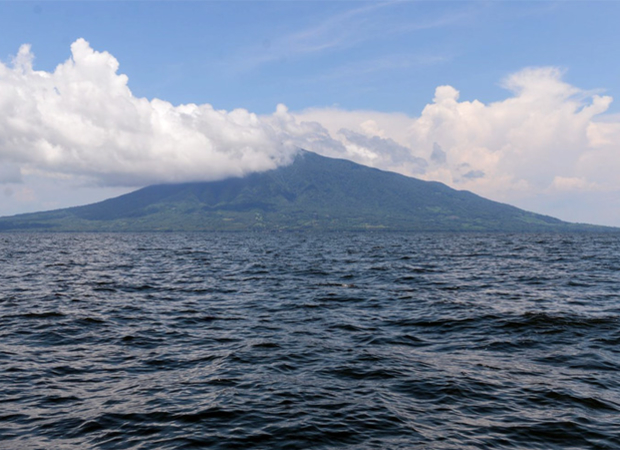
The Great Lake in Danger
from ConfidencialWhat you have measured is the thickness of the sediment, mostly clay and sand. But obviously the lake has a rocky substrate of volcanic origin, from the tertiary volcanic era that we can see in the Solentiname islands, an ancient formation on top of some basalt platforms, more recently the carving out of Ometepe island, formed by two volcanoes. So the problem is in determining what depth, density, or breadth covered by the rocky substrate would need to be dynamited. And that would have perhaps a more dramatic effect than simply removing the mud. When you stir this up, it muddies the water, which loses its potability and suitability for domestic use. And it could possibly affect the ecologic cycle of all the aquatic life in the lake.
Are we talking about at least 90, 95 kilometers [56, 59 miles] of the lake?
Yes, that is the stretch that lacks the proper depth. That means expanding the explosive waves and destroying all the fauna in the lake. So obviously we would lose all that wealth, and I commented recently that Lake Nicaragua is the most biologically diverse tropical lake in the Americas, so it has a great variety of species, genera, families. Compared with Lake Titicaca, which is about the same size and has only eight or nine species, Lake Nicaragua has about 40 endemic species. So the wealth of those tropical waters produces an explosion of life, of biodiversity that you don’t find in other parts of Latin America.
Should the Chinese business present the Nicaraguan public with an exhaustive study of the whole route and what is beneath the sediment?
One would assume that these studies should have been done already. I feel, and the entire ecological community in this country feels, that these studies have not been done, and if they were done, they were so superficial as to show that opening up the canal no matter what, without taking into account the environmental impact, is a dishonest project.
What impact will the project have on water quality? Ruth Herrera, the former Director of ENACAL, said that there are at least half a million people who use this water resource in one way or another.
Consider that, in a few decades, Managua will need water from Lake Nicaragua, because as the capital’s population grows and you have urban expansion, at the same time the filtering capacity of the lake’s Southern basin decreases, meaning that the final recourse for Managuans not to die of thirst is to take water from Lake Nicaragua. But it won’t just be Managua. It will be Granada, Masaya, maybe eventually Carazo, the city of Rivas, and it could include not just everything that is around the basin, but even beyond. One important factor is the irrigation of the valleys on Nicaragua’s Pacific side, which are very fertile because of their volcanic origin, and are not properly used because they suffer from drought at least six months of the year. I was thinking, if you used 1% of the U.S.$50 billion, we could irrigate all those plains and make them highly productive agriculturally, generating food for internal use and for export.
What would be needed to expose the risks to the conscience of the national public, to public opinion, to the government itself, and to the international community, the risks to our water, so that we can get the rectification you argue for?
What we know about the lake’s potential and what we understand about the damage that we can do to it should be enough of an argument, not only to raise the national consciousness and convince people that this is not the best way to use this body of water. Even within the international community, and not just the environmental community, the risks involved in this project in a country without the technical capacity to manage it are really a concern that even investors will have to consider. We have to understand that Nicaragua does not have either the technical or financial capacity to absorb the project’s immense impact or to develop the project without foreign interference that could compromise our sovereignty.
That’s why the business has not wanted to release the information it supposedly has about the great environmental effects that would destroy Lake Nicaragua. We cannot wait for the international community to come to the aid of our lake. It’s the national conscience, realizing that we’d be losing our best resource, and that now people can express through the fear or losing their land, or their farm, but which obviously each day could increase to create concerns that the government would have to consider seeing how this ambitious, complicated, and involved megaproject can be restrained into something that can be better managed by the Nicaraguan people.




